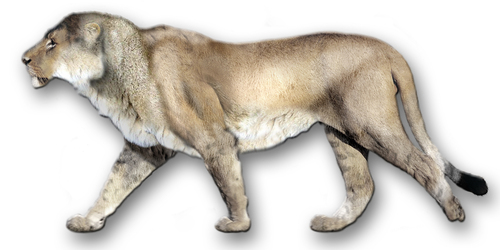
American Lion
Panthera atrox, the mighty American lion, once prowled North America's vast plains. Larger and more robust than today's lions, it was a dominant predator shaping Pleistocene ecosystems, preying on megafauna and showcasing nature's grandeur.
255.111 - 421.841 kg
Weight
Length: 1.615 - 2.499 m; Height: 1.1892 m
Size
Characteristics
Panthera atrox, commonly known as the American lion, was a large prehistoric feline that roamed North America during the Pleistocene epoch. It is known for its robust build, larger than modern lions, and its habitat range included open plains and woodlands. This apex predator likely hunted large herbivores, influencing the ecosystem dynamics.
Distribution Range of the American Lion
Panthera atrox, commonly known as the American lion, was native to North America. Its geographical distribution included the regions now known as the United States, Mexico, and parts of Canada. Fossil evidence suggests it was particularly widespread in the western and central parts of the United States, as well as in Mexico's central and northern regions.
American Lion's Habitat
Environmental Conditions
Panthera atrox inhabited various environments ranging from open plains to woodlands. This suggests the species was highly adaptable to different climates, though it likely preferred areas that provided ample prey and cover, such as grasslands and forested regions.
Ecological Niche
As an apex predator, Panthera atrox occupied the top of the food chain in its ecosystem, preying on large herbivores like bison, deer, and possibly young mammoths and mastodons. Its ecological role was crucial in maintaining the balance of the ecosystems it inhabited by controlling herbivore populations.
Copyright @ Nature Style Limited. All Rights Reserved.
 English
English